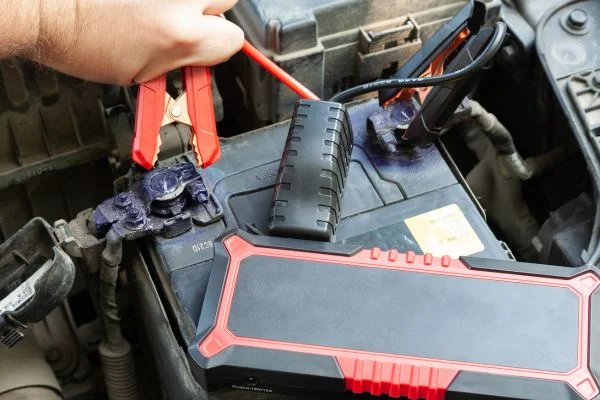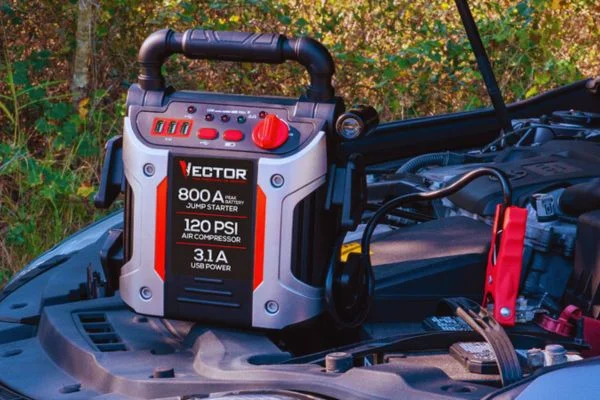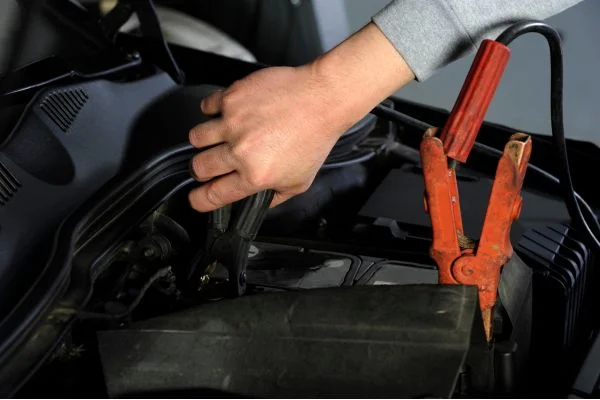A jump starter is the best option when your car battery dies while traveling. A jump starter will save you money and time in your car. However, the question arises: can a jump starter charge a battery when you jump start your car? You will get 90% of your answer if you know the difference between jump starting and charging. The first thing you need to understand is how jump starters work.
Quick Guide
Jump starters do not charge batteries, often mistaken for battery chargers. Its primary function is to provide a burst of power to start a vehicle with a dead or weak battery. During cranking and jumping, it temporarily bridges the energy gap. The jumpstart does not replenish the battery's charge; it simply starts the vehicle so that the alternator can take over and charge the battery.
What Is a Jump Starter?

Jump starter is a portable device designed to jump-start your car's battery so you can get back on the road. It boosts the energy source of your vehicle. When your car's battery is completely discharged, a jump starter can provide the power you need to restart your car. No need to rely on strangers or wait for a tow truck - a jump starter is a reliable, do-it-yourself solution.
Different Types of Jump Starters
There are many different types and sizes of jump starters. Many are Portable and lightweight, fitting neatly in your glove compartment, while others are larger and more powerful, suitable for heavy-duty vehicles. Traditional cable-based jump starters and lithium-ion jump starters are the two main types.
Jump starters use jumper cables to connect your dead battery to a running vehicle's battery. Lithium-ion jump starters, on the other hand, are smaller, more portable, and don't require another vehicle. A lithium-ion battery stores energy and delivers it directly to your car's battery.
Components of a Typical Jump Starter

The jump starter has several key components, including a battery, clamps or cables, and safety features. Jump starters rely on their internal batteries to store and deliver electrical energy. Connections between the jump starter and the dead battery are made using clamps or cables.
The jump-starting process is made safe and foolproof by features such as reverse polarity protection and overload protection. Your battery will be able to be recharged with the help of these components that work in harmony.
Charging vs. Jump Starting
Jump-starting and charging a car battery serve different purposes. Battery charging involves gradually replenishing the battery's energy. The battery gradually regains its full capacity by refilling like a glass of water. In contrast, jumping starts are similar to giving a glass of water a quick splash of energy.

Charging is a process meant to restore a fully depleted battery over several hours instead of jump-starting, which is intended to get a dead battery to start the engine immediately.
How Charging a Battery Works?
An external power source, typically a battery charger, delivers a controlled flow of electricity to a car battery when charged. The charging rate is adjusted according to the battery's voltage, preventing overcharging or damage.
The battery regains its charge at a slower pace with charging rather than jump-starting. Battery health can be maintained and extended using this method.
How Jump Starting Differs from Traditional Charging?
Jump starting is a quick fix for a dead battery, as mentioned earlier. It provides a sudden surge of power to the car's battery by using the energy stored in a jump starter. Jump-starting doesn't aim to recharge the battery, unlike traditional charging fully.
While driving, it relies on the alternator and the engine to recharge the battery by providing just enough power to run the engine. Now you are clear about can a jump starter charge a battery.
Pros and Cons of Jump Starting Compared to Charging
Jump start is a convenient solution when you're in a hurry and must start your car immediately. In an emergency, it is convenient. However, it doesn't address the underlying issue, and repeated jump starts without addressing it can result in battery degradation.

Alternatively, charging ensures that the battery reaches its full capacity, which is a more comprehensive approach to battery maintenance. In the long run, it keeps your battery in good condition. Depending on your specific circumstances and battery condition, you may need to jump-start or charge your vehicle. I hope now you can understand can a jump starter charge a battery or not.
How to Use a Jump Starter? 6 Easy Steps
Be sure to have all the necessary tools and equipment before using a jump starter to charge a battery.

Step#1 Gather the tools
Jump starter, jumper cables with clamps, safety goggles, and gloves are all you'll need. Ensure the jump starter is fully charged or has enough power to boost the dead battery.
Step#2 Inspect the battery
Check the battery of the car by opening the hood. Make sure the jump starter is ready for jump-starting. Connect the cables after inspecting the jump starter and battery.
Step#3: Connect the Jumper Cables
Connect the red jumper cable clamp to the dead battery's positive terminal. Attach the other end of the red cable to the jump starter's positive terminal. Connect the black cable clamp to the jump starter's negative terminal.

Finally, attach the other end of the black cable to a clean, unpainted metal surface on the vehicle. To reduce the risk of sparks, do not connect it directly to the negative terminal of a dead battery.
Step#4: Power Up the Jump Starter
Make sure the jump starter provides power to the dead battery. The instructions for activating boost mode can be found in the jump starter's manual. Allow the dead battery to charge for a few minutes after the jump starter is ready.
Step#5: Start the Dead Vehicle
Start the vehicle with the dead battery while the jump starter provides power. As the battery charges, give it some more time to start. Make sure the battery is adequately charged by running the vehicle for a few minutes after starting.
Step#6: Disconnect and Stow
Take the jumper cable off in the reverse order they were attached after you've successfully started the dead vehicle.

Remove the black cable from the metal surface, then detach the red cable from the jump starter and the dead battery's positive terminal. Make sure you store your jump starter and cables properly.
When Should You Use a Jump Starter?
You can avoid unexpected breakdowns by recognizing the signs that your battery needs a jump start. Your battery is likely low on charge if you hear a rapid clicking sound when you turn the key.
Dimming headlights or interior lights can also indicate a problem when you try to start the car. Watch out for warning lights on the dashboard that indicate a battery problem in modern vehicles.
Situations Where Jump Starting Is the Best Solution
There are a variety of situations in which jump starters are useful. A jump starter can be a lifesaver in a remote area without roadside assistance. It's also useful to avoid inconveniencing others by asking for a jump from a passing vehicle.
Batteries lose power in cold weather, and jump starters can provide a boost to start the engine. In addition, if your vehicle hasn't been used for a long time, the battery may have drained, requiring a jump start.
Jump-starting is not recommended in certain situations
In some situations, jump starters are not recommended, even though they are versatile. If your battery is physically damaged or leaks, jump-starting can be dangerous. In the same way, if you suspect a problem with the vehicle's electrical system, you should consult a professional rather than try to jump-start it.
A frozen battery can rupture if you attempt to jump-start it. In such cases, seeking expert help or replacing the battery is safer.
Safety Precautions
When jump-starting a vehicle, safety is paramount. Before starting the process, turn off the jump starter and vehicle. A short circuit can occur if the positive and negative clamps touch each other.
Following the manufacturer's instructions for your specific jump starter model is essential, as each device may require different steps. Consult your vehicle's manual for clarification on the process or its electrical system if you need help.
Common Mistakes to Avoid
Jump-starting is a useful skill, but it is easy to make mistakes. Reversing the polarity, connecting the positive clamp to the negative terminal, is a common error. The vehicle's electrical system can be damaged as a result. Jumpstarting a severely damaged or sulfated battery can also be dangerous. Before jump-starting a battery, inspect it for visible damage.
Also, don't jump-start a vehicle with a frozen battery; it can rupture and cause injuries. Maintaining your jump starter properly and following these precautions will ensure a successful jump start.
Ending point
The jump starter is an indispensable companion in automobiles, where your vehicle's battery can make or break your day. Although it won't charge your battery traditionally, it can quickly revive a dead battery and get you back on the road.
A hassle-free driving experience can be achieved by understanding the differences between jump starting and charging and when to use this handy device. If you know the difference between a jump starter and charging, you never ask can a jump starter charge a battery. Don't let your car's heart go without a jump starter when needed.
